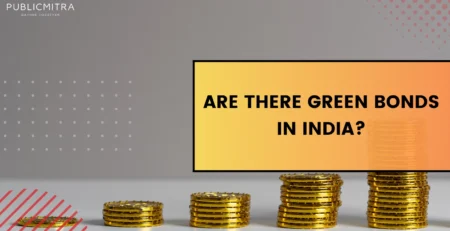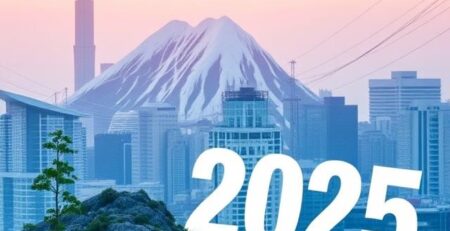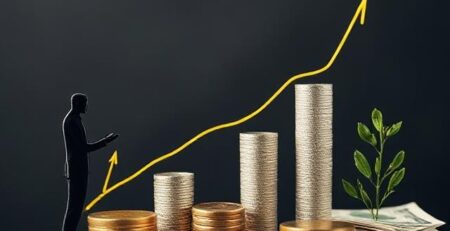Adani Group Debt to Equity Ratio Now Stands at 15-Year Low of 0.98: A Remarkable Comeback Strategy Post-Hindenburg
Introduction
The Adani Group—a name synonymous with Indian infrastructure, energy, and logistics—has experienced a seismic shift since the Hindenburg research report shook financial markets in early 2023. Once battered by allegations and a tumbling stock price, the group has engineered a stunning comeback. Central to this turnaround is Adani Group’s debt to equity ratio dropping to a 15-year low, a feat achieved through meticulously planned strategies including asset monetization, corporate restructuring, aggressive equity infusion, and strategic deleveraging.
As of the first half of FY25, Adani Group companies’ gross debt to equity ratio stands at just 1.12, compared to 2.12 at the end of FY22, marking the lowest level in at least 15 years. This article provides a 360° analysis of the Adani Group’s deleveraging journey and evaluates which of its business verticals emerge as strong investment candidates entering Q3 2025.
Table of Contents
- The Hindenburg Crisis: Challenges and Impact
- Asset Monetization: Strategic Unlocking of Capital
- Corporate Restructuring and Governance Overhaul
- Aggressive Equity Infusion: Attracting Global Capital
- Strategic Deleveraging Moves
- Profitable Reinvestments from Cash Flow Businesses
- Early Debt Repayments and Impact on Credit Trust
- Analysis of Attractive Adani Verticals for Investors (2025)
- Implications for Stakeholders and Future Prospects
- AIO, SEO & AEO Strategies for SERP Leadership
The Hindenburg Crisis: Challenges and Impact
In January 2023, Hindenburg Research released a damning report accusing the Adani Group of stock manipulation and accounting irregularities. This triggered a sharp correction in Adani stocks, wiped billions off the group’s market capitalization, and cast doubts on its aggressive debt-fueled expansion model. Lenders began reassessing risk, and global investors demanded greater disclosure and a clear roadmap for financial prudence.
The immediate impact was severe:
- Ratings agencies placed some Adani entities under negative watch.
- Trading volumes and volatility soared, with a sharp decline in share prices.
- The group’s financial ratios, especially debt to equity and return on capital employed, faced unprecedented scrutiny.
Faced with this existential challenge, the Adani Group pivoted to a multi-pronged recovery plan focused on restoring balance sheet trust and ensuring long-term viability.
Asset Monetization: Strategic Unlocking of Capital
One pillar of the Adani Group’s comeback strategy was aggressive asset monetization. This involved selling stakes in mature businesses and unlocking value through complex financial transactions.
Key Initiatives:
- Adani Green Stake Sale: The group sold a significant minority stake in Adani Green Energy Ltd. to global investors, resulting in handsome capital inflows while retaining strategic management control.
- AWL (Adani Wilmar Ltd.) Partial Monetization: Monetization of non-core or mature assets generated predictable cash inflows without impacting the group’s operational synergies.
These moves provided liquidity, reduced reliance on debt, and sent a positive message to investors regarding capital discipline.
Impact:
By freeing up capital from non-core and mature segments, the group was able to inject funds into growth areas while maintaining a leaner balance sheet.
Corporate Restructuring and Governance Overhaul
The group undertook a comprehensive restructuring drive, focused on streamlining diverse businesses into distinct verticals with autonomous governance, transparent reporting, and clear risk segregation.
Key Reforms:
- Divisional Autonomy: Each business vertical (Energy, Transport & Logistics, Green Energy, FMCG, Power, Infrastructure) was empowered to manage its own balance sheet and operational targets.
- Transparent Reporting: Adoption of global accounting standards and quarterly disclosures aligned with SEBI and international best practices.
Result:
Enhanced governance and transparency restored credibility among institutional investors and rating agencies—crucial for accessing international capital markets.
Aggressive Equity Infusion: Attracting Global Capital
To further bolster the group’s balance sheet and instill investor confidence, the Adani Group pursued aggressive equity infusions post-2023.
Timeline and Investors:
- Sovereign Wealth Funds: Large Foreign Direct Investment (FDI) flows came from UAE, Qatar, and US-based funds.
- Block Deals: Substantial equity stakes were sold to long-term institutional investors, increasing the group’s net worth and reducing financial leverage.
- Public Issues: Select group companies conducted qualified institutional placements (QIPs) and rights issues to further strengthen their equity base.
Impact:
By the end of September 2025, the group’s combined net worth increased 31.5% year-on-year, while gross debt grew by 17.1%. This tilted the financial ratios decisively in favor of sustainability and resilience.
Strategic Deleveraging Moves
Deleveraging lies at the heart of the Adani Group’s financial recovery post-Hindenburg.
What Is Deleveraging?
- Deleveraging involves reducing the aggregate level of debt relative to equity, making the firm less vulnerable to fluctuations in interest rates or credit conditions.
Key Deleveraging Actions:
- Accelerated Asset Sales: As mentioned, monetization deals played a crucial role.
- Earnings Retention: Instead of large dividend payouts, profits were ploughed back, enlarging equity and improving debt metrics.
- Early Repayment: Several Adani companies repaid loans ahead of schedule, improving their credit profiles and sending strong signals to rating agencies.
Current Status:
- At the end of H1 FY25, the consolidated debt to equity ratio of Adani Group firms declined to 1.12, compared to over 2 just two years ago.
- Adani Enterprises’ ratio stands at 1.60 for March 2025, still higher than group average, but much improved from previous years.
Profitable Reinvestments from Cash Flow Businesses
The Adani Group’s ability to reinvest profits from cash-surplus businesses has further strengthened its financial base.
How It Works:
- Mature divisions such as Adani Ports and Adani Transmission generated ample free cash flows.
- These were redirected into high-growth verticals or used to reduce high-cost debt rather than distribute as dividends or engage in risky acquisitions.
Benefit:
- The organic reinvestment approach reduces dependency on external financing and helps rotate capital towards areas offering superior risk-adjusted returns.
Early Debt Repayments and Impact on Credit Trust
Demonstrating discipline, Adani companies made a concerted effort to repay debt before schedule.
- *Advance repayments of the most expensive tranches lowered interest outgo and improved future profit margins.
- This proactive approach led to better credit ratings, easier access to international financing, and a lower cost of capital.
Investor Perception:
Early repayments signal financial prudence, boosting the group’s repute at a time when global markets are risk averse.
Financial Snapshot: Debt to Equity Evolution
Below is a snapshot of Adani’s key ratios over recent years, highlighting the transformation:
| Financial Year | Gross Debt (₹ Trillion) | Net Worth (₹ Trillion) | Debt-Equity Ratio |
|---|---|---|---|
| FY22 | 2.4 | 1.13 | 2.12 |
| FY23 | 2.5 | 1.23 | 2.03 |
| FY24 (H1) | 2.8 | 1.5+ | 1.12 |
Note: Individual company ratios will vary; for example, Adani Enterprises Ltd. was at 1.65 as per March 2025 consolidated results.
Analysis of Attractive Adani Verticals for Investing (2025)
With strengthened balance sheets and focused business strategies, some Adani Group verticals are now particularly attractive for domestic and global investors. Let’s assess them based on recent financials and industry trends:
1. Adani Green Energy Ltd.
- Exceptional Profit Growth: Delivered over 127% CAGR profit growth over the past five years.
- Improved Working Capital: Debtor days improved, indicating healthy cash flows.
- Global ESG Focus: Renewables remain a favored theme amid decarbonization drives.
Summary: Adani Green, thanks to asset monetization and deleveraging, is better poised for scalability in the capital-intensive renewables sector.
2. Adani Ports & SEZ
- Robust Free Cash Flows: As a mature infra business, APSEZ generates strong and stable cash required for reinvestment or debt reduction.
- Gateway to Trade: Its strategic assets make it a lynchpin in India’s logistics, benefitting from the country’s trade growth.
3. Adani Wilmar Ltd. (AWL)
- Consumer Demand: Presence in FMCG creates steady, less cyclical revenue.
- Asset Monetization Impact: Stake sales have brought in capital and diversified risk.
4. Adani Energy Solutions Ltd.
- Despite a high debt ratio (1.83 times as of July 2025), improved financial results and institutional investor interest suggest the beginning of a favorable turnaround cycle.
Factors Enhancing Investor Attractiveness:
- Lower Financial Leverage: Improved ratios increase resilience to shocks.
- Transparency & Governance: International standards attract global capital.
- Sectoral Tailwinds: Green energy and logistics benefit from policy and demand shifts.
Implications for Stakeholders and Future Prospects
For Shareholders
Improved balance sheet strength and greater transparency enhance long-term investment value. Adani’s diversified approach post-restructuring and focus on core verticals means investors can select businesses aligned to varying risk profiles.
For Lenders & Creditors
Lower leverage and early repayments reduce credit risk, improving borrowing terms for future expansion.
For Broad Market
The Adani case underscores the importance of capital discipline, especially in emerging market conglomerates with wide global exposure.
Q: Why is Adani Group’s debt to equity ratio important for investors?
A: It measures financial leverage and risk. A lower ratio means more equity backing every rupee of debt, making the group safer and more attractive for investment
Q: Which Adani verticals are attractive for 2025 investors?
A: Renewable energy (Adani Green), ports and logistics (APSEZ), and select FMCG plays (AWL) due to improved cash flow and reduced leverage
Conclusion
The Adani Group’s journey from a period of extreme turbulence to achieving its lowest debt to equity ratio in 15 years illustrates the power of strategic asset monetization, disciplined reinvestment, aggressive equity raising, and best-in-class governance. With several verticals now offering investor-friendly risk-return profiles, and a balance sheet built for resilience, the Adani story enters a new phase—more sustainable, transparent, and globally relevant than ever before.
As India’s economy grows and global investors seek robust growth alongside financial prudence, Adani’s transformation stands as a template for corporate resurgence post-crisis












